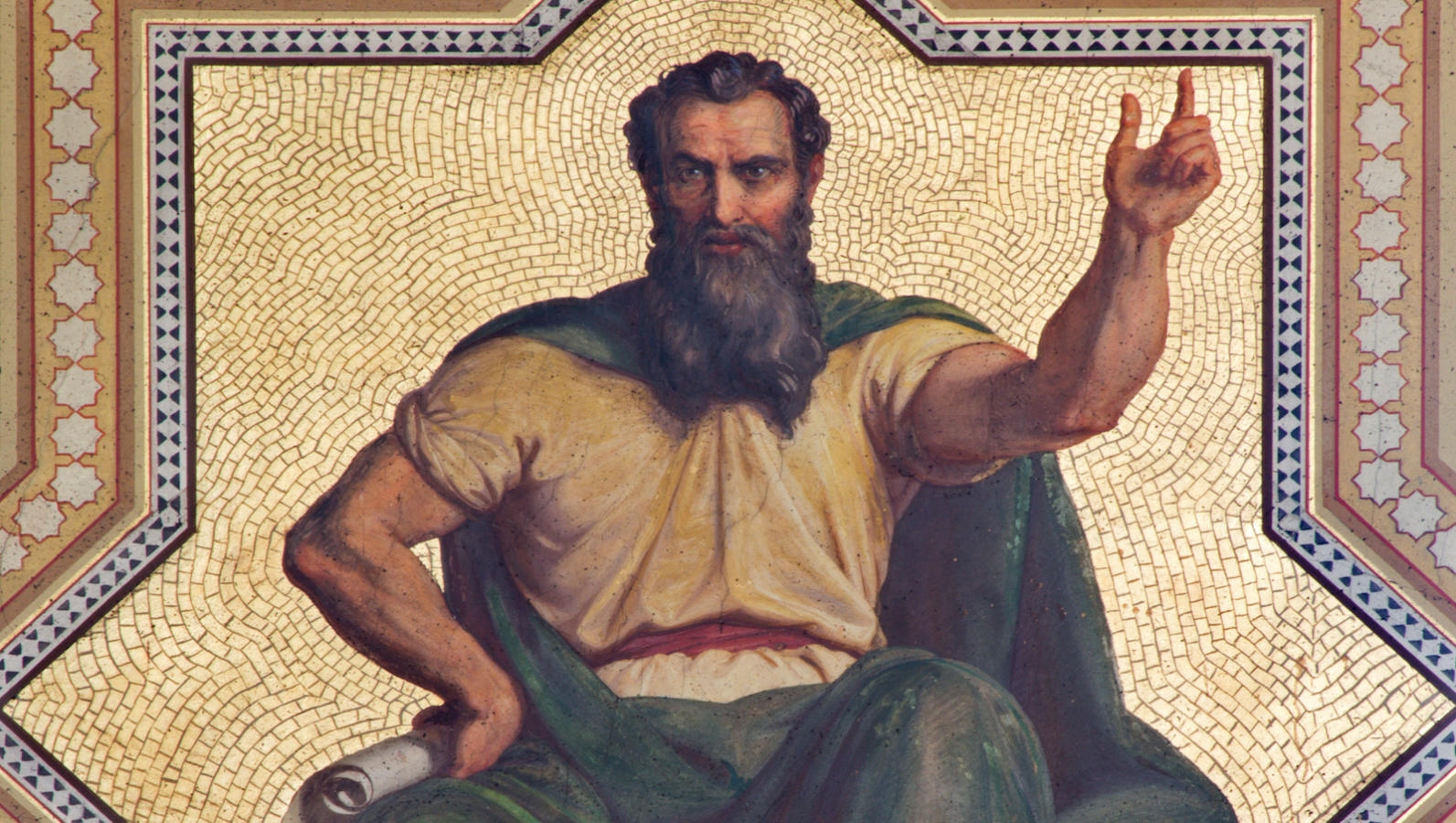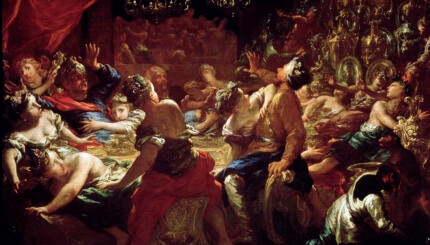The Book of Joel is the second work in the collection of the Minor Prophets known as Trei Asar, or “The Twelve,” and is ascribed in the superscription to Joel son of Petuel. There is no further information either in the superscription or from indications in the text regarding the time or place of the prophet.
Why the Book of Joel is Second in the Order of the 12 Minor Prophets
Overall, the sequence of books in “The Twelve” conforms to the historical periods of the prophets, beginning with Hosea and Amos from the mid-eighth century B.C.E. (as the first and third in the list) and concluding with Haggai, Zechariah, and Malachi from the late sixth to early fifth centuries B.C.E. The occurrence of Joel between Hosea and Amos puts this prophet earlier than any scholarly reckoning (see below), and many have suggested that his place in the sequence may be due to verbal and thematic considerations.
Read the Book of Joel in Hebrew and English on Sefaria.
First, some of the final words of Joel (Joel 4:16) rally with the opening words of Amos (Amos 1:1), and an arranger might have brought them into conjunction. Second, the Book of Joel refers repeatedly to the “day of the Lord” as a time of doom and terror (Joel 1:15; 2:11), as does Amos (Amos 5:18, 20). And finally, one may observe that the central horror of the Book of Joel is a plague of locusts, one type of which is called the gazam (cutter [Joel 1:4‑]), whereas the prophet Amos reports how God brought about a plague of gazam (Amos 4:9), among other disasters, in order to bring the people to repentance ‑ all to no avail.

Help us keep Jewish knowledge accessible to millions of people around the world.
Your donation to My Jewish Learning fuels endless journeys of Jewish discovery. With your help, My Jewish Learning can continue to provide nonstop opportunities for learning, connection and growth.
Part 1: The Locust Plague’s Ravaging of the Land and the Repentance of the People
Part 1 (Joel 1‑2) presents a detailed and graphic depiction of an unprecedented locust plague, which attacks like a raving enemy that wipes out the food supply of the people (1:2-7,10‑12, 16‑19). The prophet exhorts the people, the elders, and the priests to don sackcloth and beseech God’s mercy through repentance, fasting, and prayer. He tells the people to rend their hearts and “turn back” to their gracious Lord‑for out of compassion He may “turn and relent” (2:12‑14). For their part, the priests are urged to weep and cry out a liturgy of anguish, that the Lord may “spare” His people (2:17).
The turning point comes in response: “Then the Lord was roused on behalf of His land and had compassion upon His people” and in a great word of promise, He tells them that He will provide new grain, wine, and oil in abundance (2:18‑19). The liturgies of penitence are now replaced by divine assurances and joyful proclamations by the ravished soil. Rains will come; the threshing floors will fill to overflowing (2:23‑24.). Thus will God manifest His presence “in the midst of Israel” (2:27).
Part 2: The Great and Terrible Day of the Lord
Part 2 (Joel 3‑4) goes on to speak of the end of days: there will be a renewal of prophecy (3: 1‑2), but soon a “great and terrible day of the Lord comes” (v. 3), when “the sun shall turn into darkness and the moon into blood” (v. 4.). Only those who invoke the name of the Lord shall escape (v. 5).
And then there is a report of the restored fortunes of Israel and a judgment of the nations for all that they have done to the people (Joel 4:1‑8). In a rousing call, the nations are told to “prepare for battle” (v. 9) and in an eerie reversal of Isaiah’s ancient oracle of peace, told to beat their plowshares into swords (v. 10)! The multitudes will be judged on a day when the “sun and moon are darkened” (v. 15). The nations of Egypt and Edom will become a desolate waste; but as for Israel, the Lord Himself will be their shelter. He will dwell in Zion, and the earth will flow with wine and milk (vv. 17‑18, 21).
How the Two Different Sections of Joel Work Together
Clearly a different scene and language move in the two parts. Nevertheless, there is much verbal and thematic continuity–for example, the dark and devastating day of the Lord (Joel 2:2 and 3:4) and the eventual divine gifts to Israel of natural bounty (2:24 and 4:13). What the first part portrays in terms of a natural disaster, caused by withdrawal of the divine presence, the second part presents as God’s supernatural presence in terms of active judgment against Israel’s enemies and active grace for His people. And what the first part presents as an event affecting Israel alone becomes in the second part a decision of judgment against the nations.
The leitmotif of disaster in both parts is a day when the land’s bounty is laid waste and the lights of heaven go out. By contrast, God’s grace is a time of flowing water and healthy fields. The poles of death and life are starkly registered: the dependence of human life upon divine care for existence is manifest.
Can a Swarm of Locusts be Just a Swarm of Locusts?
Finally, one is left to ponder the two parts of the composition: whether the book divides into pre-exilic and postexilic strands, whether the work is a unity and the locusts are a symbol of the judgment of the Lord, or even whether some natural event stimulated visions of an apocalyptic moment.
Apocalyptic Imagery and Hopes for National Revival
As to its date, in addition to liturgical practices and language, the whole tone of the book suggests that we are dealing with a period sometime after the restoration of the Second Temple. Note in particular that the imagery of God dwelling in Zion and the Temple as a fount of blessing recalls the exilic and post-exilic ideology of the prophets Ezekiel (47: 1‑12) and Zechariah (chapter 14). Moreover, the latter prophet even presents us with a similar apocalyptic battle against the nations, portrayed through images of deadly terror and dark horror. The result is an apocalyptic fantasy with more than a trace of the smoldering hopes for national revival and the imagined collapse of the foreign rulers.
This article is excerpted from The JPS Bible Commentary: Haftarot, and is reprinted with permission from the Jewish Publication Society.



